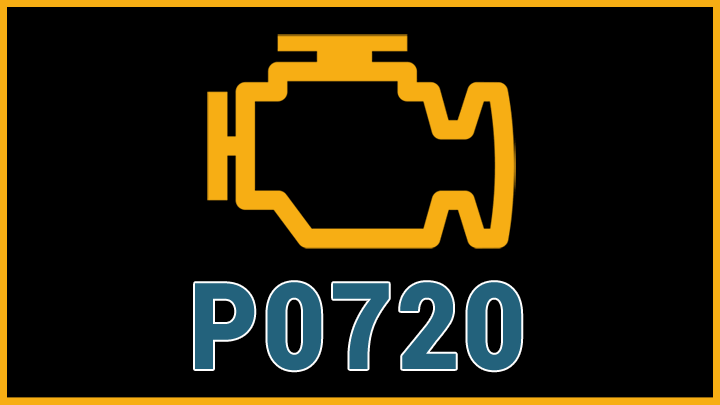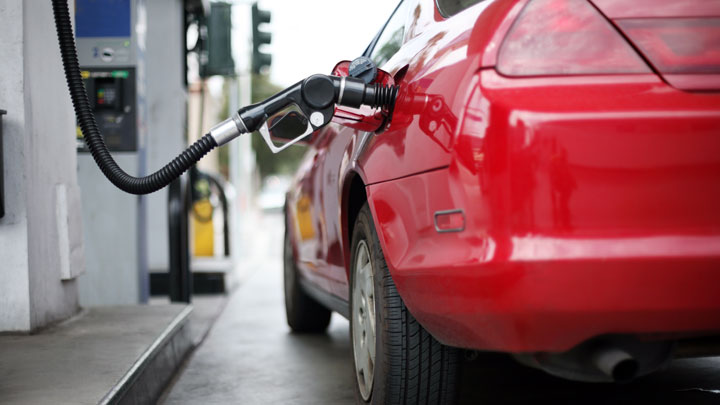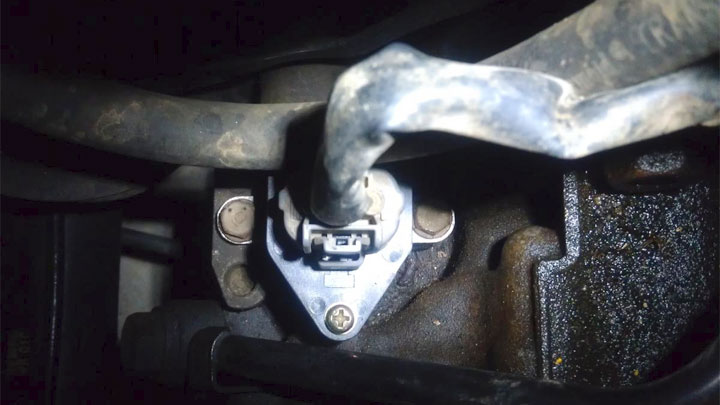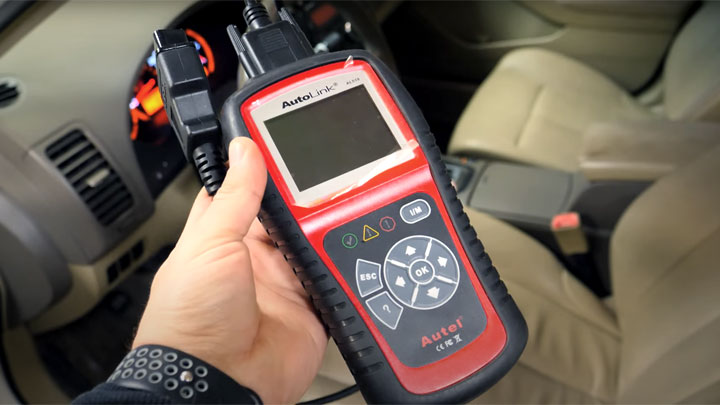P0720 Code (Symptoms, Causes, and How to Fix)
Don’t ignore that check engine light. While a P0720 code can be tricky to diagnose and might cost quite a bit to repair by itself, it’s a code that if ignore, you might end up needing a new engine or getting into a serious accident.
But exactly is a code P0720, what causes it, and most importantly, how do you fix it? We’ll break it all down for you here.

- DTC P0720 relates to an issue with the vehicle's speed sensor.
- Unless it's an emergency, do not drive with this code or you risk potential issues on the road and further engine damage.
- Symptoms may include issues with shifting gears, decrease in fuel economy, and/or performance issues.
- Causes can range from simple sensor malfunctions to more serious transmission problems.
What Does Code P0720 Mean?
Note: Modern vehicles have two transmission speed sensors. One on the input shaft and one on the output shaft. Code P0720 refers to the latter.
Once you have the code, you need to figure out exactly what it means, and unless you’re a mechanic, a description of “output speed sensor circuit” only tells you so much. When this code turns on in your vehicle, it means that the PCM received a code from the output speed sensor that is outside of an acceptable range.
The reading could be slightly outside of variance, or it could be massively off. Either way, it tells the PCM there’s a problem with that circuit.
Related: Code C0035, Code P0500
Symptoms of Code P0720

If you have a code P0720, there’s a good chance you’ll notice a few other symptoms. For starters, your vehicle likely won’t shift the way it should. This is because your vehicle can’t accurately gauge the speed it’s going, which means it’ll be shifting at the wrong speeds.
Not only does this create a rough shift and create problems while you’re driving, but it’s also going to cause a notable drop in fuel efficiency. Moreover, it’s common for your engine to display all sorts of performance issues.
You could notice things like your engine dying at higher speeds or when getting ready to accelerate rapidly (like when merging onto the highway), or you could notice symptoms like misfires.
Finally, while it’s unlikely, it is possible that you could have no noticeable symptoms when you have a code P0720. This can happen if the sensor breaks in a way that it thinks everything is at the right speed. It won’t be able to adjust to different conditions, but under many driving conditions it could run normally.
- Improper vehicle shifting
- Decrease in fuel efficiency
- Performance issues
- Sometimes no symptoms
Causes of Code P0720

If you’re hoping for an engine code with a simple fix, code P0720 will disappoint you. That’s because while the problem is usually a faulty output speed sensor, it could be several other conditions.
These conditions include wiring problems to the output speed sensor itself, or there could be problems with the shift solenoids, the valve body, or even with the coolant temperature sensor! Another potential issue is with the transmission fluid, especially if it’s extremely dirty.
That’s because all these things work together and create problems when your vehicle is trying to shift, and when your vehicle is having problems shifting, it’ll often go through a code P0720.
- Faulty output speed sensor (transmission speed sensor)
- Defective shift solenoids
- Faulty engine coolant temperature sensor
- Faulty valve body
- Dirty/old transmission fluid
- Output speed sensor wiring issues
See Also: Common Causes of a Speedometer Malfunction
Where is the Output Shaft Speed Sensor Located?
The output speed sensor location is generally located in or around the transmission housing near the output shaft. The exact location is very vehicle-dependent so you’ll need to confirm its location via a model-specific service manual.
Is Code P0720 Serious?
Yes. If your vehicle has a code P0720, you really shouldn’t drive it. The problem is that this code can lead to all sorts of performance issues while you’re on the road. The engine could die while you’re trying to merge onto the highway.
Another potential concern is with misfires and massive performance problems that could further damage your engine. Even if you don’t have a dangerous condition like an engine dying while you’re driving, you could find that you need expensive repairs when you finally do get it to the shop!
Because of these concerns, you should not drive with a code P0720. In fact, you should either have a mechanic come to you to fix it or tow it to the repair shop.
How to Fix

When your vehicle has a code P0720, the first thing you want to rule out is the output speed sensor. This is the most common problem with this code, and because of this, it’s the first thing you need to address.
The best way to do this is with an automotive scan tool. You can look at the reading the sensor is getting from the sensor and use this data to further refine your search. However, if the sensor reading is off, you’ll still need to rule out wiring issues with a voltmeter.
From there, check the transmission for extremely dark fluid, this is a common occurrence if you haven’t kept up with proper transmission fluid flushes and changes.
Finally, check the readings from the engine coolant temperature sensor on the automotive scan tool to rule this out if everything else is looking like it should.
- P0521 Code (Symptoms, Causes, How to Fix) - Mar 22, 2024
- How to PROPERLY Clean 5 Types of Steering Wheel Materials - Feb 19, 2024
- What Should You Do If Your Check Engine Light Comes On? - Nov 6, 2023
